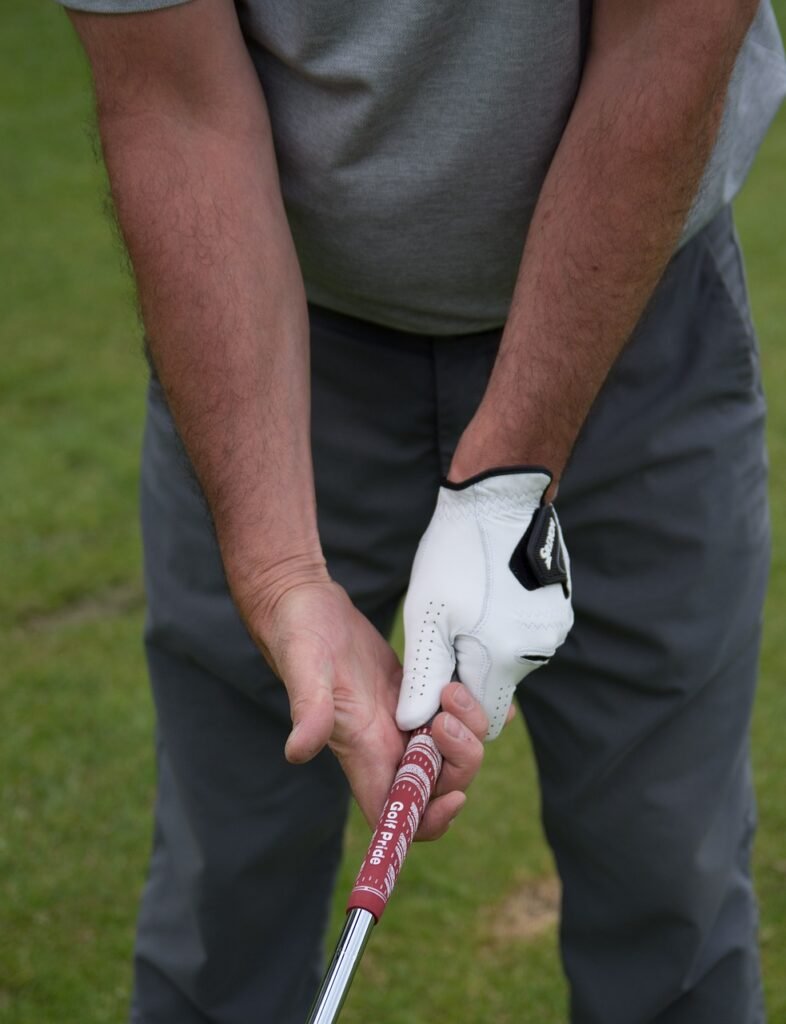Introduction to Golf Drivers
The golf driver, often regarded as one of the most crucial clubs in a golfer’s arsenal, holds a unique place in the game. Characterized by its long shaft and large clubhead, drivers are designed for maximum distance, enabling players to launch the ball off the tee with considerable force. Unlike irons or wedges, the driver is specifically tailored for those initial, long-distance shots that set the stage for the rest of the hole. Its distinct design features—such as a low loft angle, typically between 8 to 12 degrees, and a lightweight, aerodynamic structure—facilitate achieving optimal launch conditions and enhanced ball speed.
The role of the drivers in golf is paramount, often determining the foundation of a player’s strategy on the course. Mastery over this club can lead to significant advantages, such as reduced approach distances to the green and favorable positioning. For both amateur and professional golfers, the driver symbolizes power and precision, embodying the aspiration to cover vast expanses with a single, well-executed swing.
Differentiating the driver from other clubs is essential to understanding its significance. While irons and wedges are utilized for their control and short-range capabilities, drivers stand out for its potential to cover maximum yardage. Its design, including a larger sweet spot and advanced materials in modern drivers, contributes to its forgiving nature, allowing even less-than-perfect strikes to travel considerable distances. This blend of power, technology, and strategic importance makes drivers an indispensable tool in the game of golf, underscoring its role as a key determinant of success on the course.
History and Evolution of Drivers
The golf driver, an essential club in any golfer’s bag, has undergone significant evolution since its inception. Originating in the 15th century, early drivers were constructed primarily from persimmon wood, a material known for its durability and dense grain. These wooden drivers featured long, slender heads and were hand-crafted by skilled artisans, making each club unique.
As the game of golf grew in popularity, so did the demand for more efficient equipment. The 20th century marked a pivotal era in the history of drivers, with substantial advancements in materials and design. Steel shafts began to replace the traditional hickory, offering increased strength and flexibility. This change allowed for more powerful and accurate swings, revolutionizing the way drivers were used.
The next major leap came in the 1980s with the introduction of metal drivers. These new drivers, typically made from stainless steel or aluminum, featured larger clubheads and a lower center of gravity. This innovation not only increased the sweet spot but also enhanced forgiveness, allowing golfers to achieve greater distance and accuracy even on off-center hits. Titanium drivers soon followed, bringing further improvements in durability and performance.
In the 21st century, the evolution of drivers has continued with the incorporation of advanced materials such as carbon fiber and composite alloys. These modern drivers are engineered using computer-aided design (CAD) and finite element analysis (FEA) to optimize every aspect of their performance. Adjustable weights and customizable lofts are now standard features, allowing golfers to tailor their drivers to their specific needs and preferences.
The evolution of the driver is a testament to the relentless pursuit of innovation in golf. From humble beginnings as wooden clubs to today’s high-tech masterpieces, drivers have continually adapted to meet the demands of modern golfers, enhancing both performance and enjoyment of the game.
Understanding Loft: How It Affects Your Game
The loft of a golf driver is a crucial element that significantly influences the trajectory and distance of your shots. Essentially, the loft refers to the angle of the clubface relative to the ground when the club is positioned correctly. This angle plays a pivotal role in determining the initial launch angle of the ball, which in turn affects its flight path and distance.
Drivers typically come with loft angles ranging from 8 to 15 degrees. A lower loft, such as 8 or 9 degrees, generates a lower, more penetrating ball flight, making it ideal for players with faster swing speeds who can generate sufficient lift. Conversely, higher lofts, like 12 or 13 degrees, produce a higher ball flight, which can be beneficial for golfers with slower swing speeds, helping them achieve greater carry distance.
Choosing the right loft is not a one-size-fits-all decision; it depends on various factors including your swing speed, launch angle, and the conditions of the courses you play. For instance, a golfer with a slower swing speed might benefit from a higher loft to help get the ball airborne more easily. On the other hand, a player who often plays in windy conditions might opt for a lower loft to keep the ball flight lower and less affected by the wind.
Skill level also plays a significant role in the selection of loft. Beginners and high-handicap players often find higher lofted drivers more forgiving, as they help in achieving a more consistent and straighter ball flight. Advanced players, who can control their swing dynamics more precisely, might prefer lower lofts to maximize distance and control.
Ultimately, understanding the intricacies of loft can greatly enhance your performance on the golf course. A properly chosen loft can help you optimize your launch conditions, improve your distance, and achieve a more consistent trajectory, thereby making a significant difference in your overall game.
Shaft Length of Drivers: Finding the Perfect Fit
The shaft length of a golf driver plays a crucial role in a player’s performance, impacting swing speed, control, and distance. A well-fitted shaft length can significantly enhance a golfer’s ability to achieve optimal results on the course. When it comes to selecting the right shaft length, several factors must be considered, including the player’s height, swing style, and experience level.
Firstly, the golfer’s height is a fundamental determinant in choosing the correct shaft length. Taller players generally benefit from longer shafts as these can help maintain proper posture and swing mechanics. Conversely, shorter golfers often find better control and accuracy with shorter shafts. However, height alone should not be the sole criterion; it should be combined with swing style and personal comfort.
Swing style is another critical aspect. Golfers with a faster swing speed might prefer a shorter shaft to gain better control and precision. A shorter shaft allows for less deviation during the swing, enhancing accuracy. On the other hand, those with a slower swing speed might benefit from a longer shaft, as it can help generate more distance by increasing the clubhead speed. The balance between control and distance is essential to finding the perfect fit.
Experience level also influences the choice of shaft length. Beginners might struggle with longer shafts due to the increased difficulty in controlling the swing. For novice golfers, starting with a standard or slightly shorter shaft can help build confidence and improve accuracy. Advanced players, who have honed their skills and swing mechanics, might experiment with different shaft lengths to fine-tune their performance and maximize their distance potential.
Ultimately, finding the perfect shaft length requires a blend of personal preference, physical attributes, and swing characteristics. Golfers are encouraged to experiment with various lengths and seek professional fittings to determine the ideal configuration. By paying attention to these factors, players can optimize their drivers for peak performance on the golf course.

Grip: The Foundation of a Good Swing
The grip of drivers are a fundamental aspect that significantly influences the quality of your swing. Choosing the right grip is essential for achieving both comfort and control, which are crucial for optimal performance on the course. Golf grips come in a variety of materials, each offering distinct features and benefits. The most common types include rubber, cord, and synthetic grips.
Rubber grips are widely popular due to their durability and cost-effectiveness. They provide a comfortable feel and are generally easier to maintain. Cord grips, on the other hand, are favored by golfers who prefer a firmer grip, especially in wet or humid conditions. The texture of the cord enhances traction, ensuring that your hands remain secure on the driver, even during powerful swings. Synthetic grips combine the best of both worlds, offering a balance of comfort and durability, often with added features such as moisture-wicking properties.
Selecting the right grip size is equally important. Grips come in various sizes, including standard, midsize, and oversize. The correct size for you will depend on the size of your hands and your personal preference. A grip that is too small can cause excessive hand action, leading to inconsistent shots. Conversely, a grip that is too large can restrict wrist movement, resulting in a loss of control and distance. To find your ideal grip size, measure the length and circumference of your hands or consult with a professional fitter who can provide personalized recommendations.
In addition to size and material, consider the texture and firmness of the grip. Some players prefer a softer grip for its cushioning effect, while others might opt for a firmer grip for increased feedback and control. Ultimately, the best grip for your driver is one that feels comfortable and secure in your hands, allowing you to execute your swing with confidence and precision.
Tips for Driving the Ball Farther and Straighter
Achieving both distance and accuracy with your golf driver is a blend of proper stance, refined swing mechanics, and mental focus. First, let’s discuss the stance. A stable, athletic stance is crucial for a powerful and controlled drive. Position your feet shoulder-width apart, with your weight balanced evenly on the balls of your feet. Align your lead shoulder slightly higher than the trailing shoulder to promote an upward strike on the ball. This posture not only aids in generating distance but also helps in maintaining trajectory.
Next, let’s delve into swing mechanics. A smooth and controlled backswing sets the foundation for a powerful downswing. Ensure you fully rotate your shoulders while keeping your lower body stable. As you transition into the downswing, focus on maintaining a steady tempo. Accelerate through the ball, ensuring that your hips and shoulders rotate in sync. This rotational power, combined with a centered strike, will maximize the efficiency of your driver, resulting in longer, straighter drives.
Mental focus is equally vital when driving the ball. Visualize the shot you intend to make, including the desired trajectory and landing spot. This mental imagery can significantly enhance your precision. Additionally, maintaining a calm and confident mindset helps in executing a fluid swing, free from tension and errors.
Common mistakes often hinder optimal performance with drivers. One frequent error is an improper grip. Ensure that your grip is neither too tight nor too loose, allowing for a natural release through impact. Another common mistake is swaying during the swing. Keeping your head steady and your lower body stable will help in maintaining balance and control.
By refining your stance, honing your swing mechanics, and sharpening your mental focus, you can significantly improve both the distance and accuracy of your drives. Identifying and correcting common mistakes will further aid in achieving more consistent and powerful drives.
Maintenance and Care for Your Drivers
Proper maintenance and care of your drivers are crucial to ensure its longevity and consistent performance. Regular cleaning, appropriate storage, and frequent inspections for wear and tear can help you get the most out of your equipment. Following these guidelines will keep your driver in top condition, allowing you to focus on improving your game.
To begin with, cleaning your driver after each use is essential. Use a soft cloth to wipe down the clubhead and remove any dirt, grass, or debris. For a deeper clean, mix a small amount of mild dish soap with warm water and gently scrub the clubhead with a soft-bristled brush. Rinse it thoroughly with clean water and dry it with a towel. Avoid using harsh chemicals or abrasive materials, as they can damage the finish and affect the performance of your driver.
Proper storage is another critical aspect of drivers maintenance. Store your driver in a cool, dry place, away from direct sunlight and extreme temperatures. Use a headcover to protect the clubhead from scratches and dings when not in use. Additionally, ensure that your driver is securely placed in your golf bag to prevent it from moving around and getting damaged during transport.
Regularly inspecting your driver for signs of wear and tear is also important. Check the clubface for any dents, cracks, or worn-out grooves, as these can impact the driver’s performance. Examine the shaft for any bends or cracks, and make sure the grip is in good condition, providing a firm and comfortable hold. If you notice any significant damage, it may be time to consult a professional for repair or replacement.
By following these maintenance and care tips, you can extend the lifespan of your golf driver and ensure it performs at its best. Consistent upkeep will not only protect your investment but also enhance your overall golfing experience.
Choosing the Right Drivers: A Buyer’s Guide
Selecting the appropriate golf driver requires a comprehensive understanding of various factors to ensure optimal performance on the course. First and foremost, brand reputation plays a significant role in the decision-making process. Established brands are often synonymous with consistent quality and innovation. Researching and considering feedback from other golfers can provide insights into the reliability and performance of specific brands.
Technology features are another critical aspect to evaluate when choosing a driver. Modern drivers come equipped with advanced technologies designed to enhance distance, accuracy, and forgiveness. Features such as adjustable loft, movable weights, and improved aerodynamics can significantly impact a driver’s performance. It is crucial to understand these technologies and how they align with your playing style and skill level.
The price range is also a major consideration for many golfers. Drivers can vary significantly in cost, with high-end models offering cutting-edge technology and premium materials. However, affordable options also exist that provide excellent performance. Determining your budget and balancing it with the desired features will help narrow down the choices.
Testing drivers before making a purchase is highly recommended. Many golf stores and pro shops offer the opportunity to try different drivers on a driving range or a simulator. This hands-on experience allows you to feel the club’s weight, assess its balance, and observe how it performs during your swing. Pay attention to factors such as the driver’s launch angle, spin rate, and overall feel.
When it comes to recommendations, beginners might benefit from drivers that prioritize forgiveness and ease of use. These drivers typically have larger sweet spots and higher loft angles, making it easier to achieve consistent shots. Intermediate and advanced golfers, on the other hand, may prefer drivers that offer more customization options and advanced technology features to fine-tune their game.
Ultimately, choosing the right driver involves considering brand reputation, technology features, price range, and personal testing. By taking these factors into account, golfers can select a driver that best suits their needs and enhances their performance on the course.



